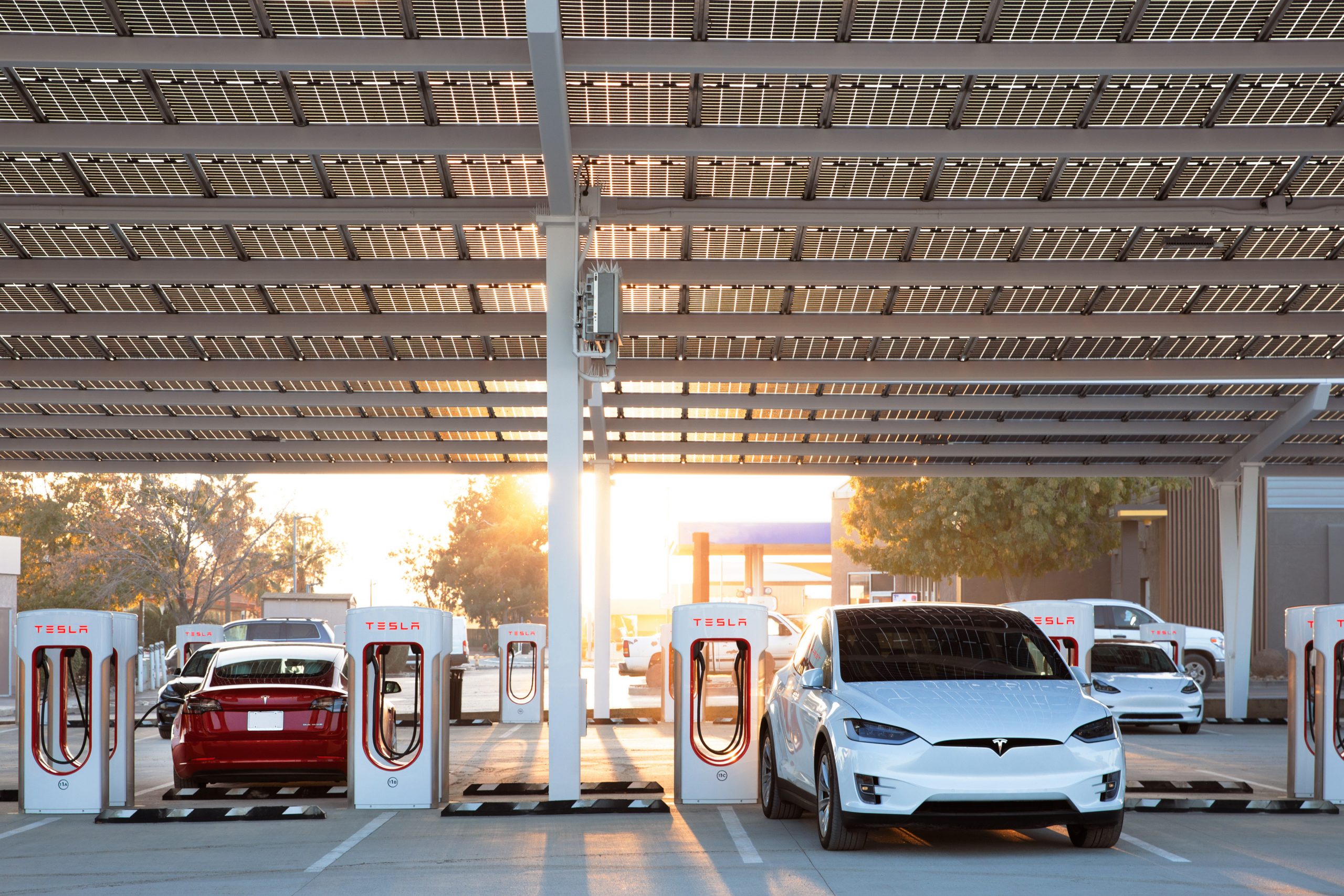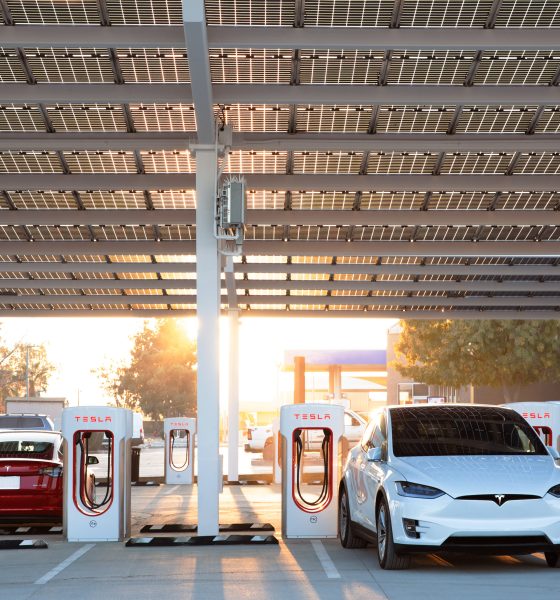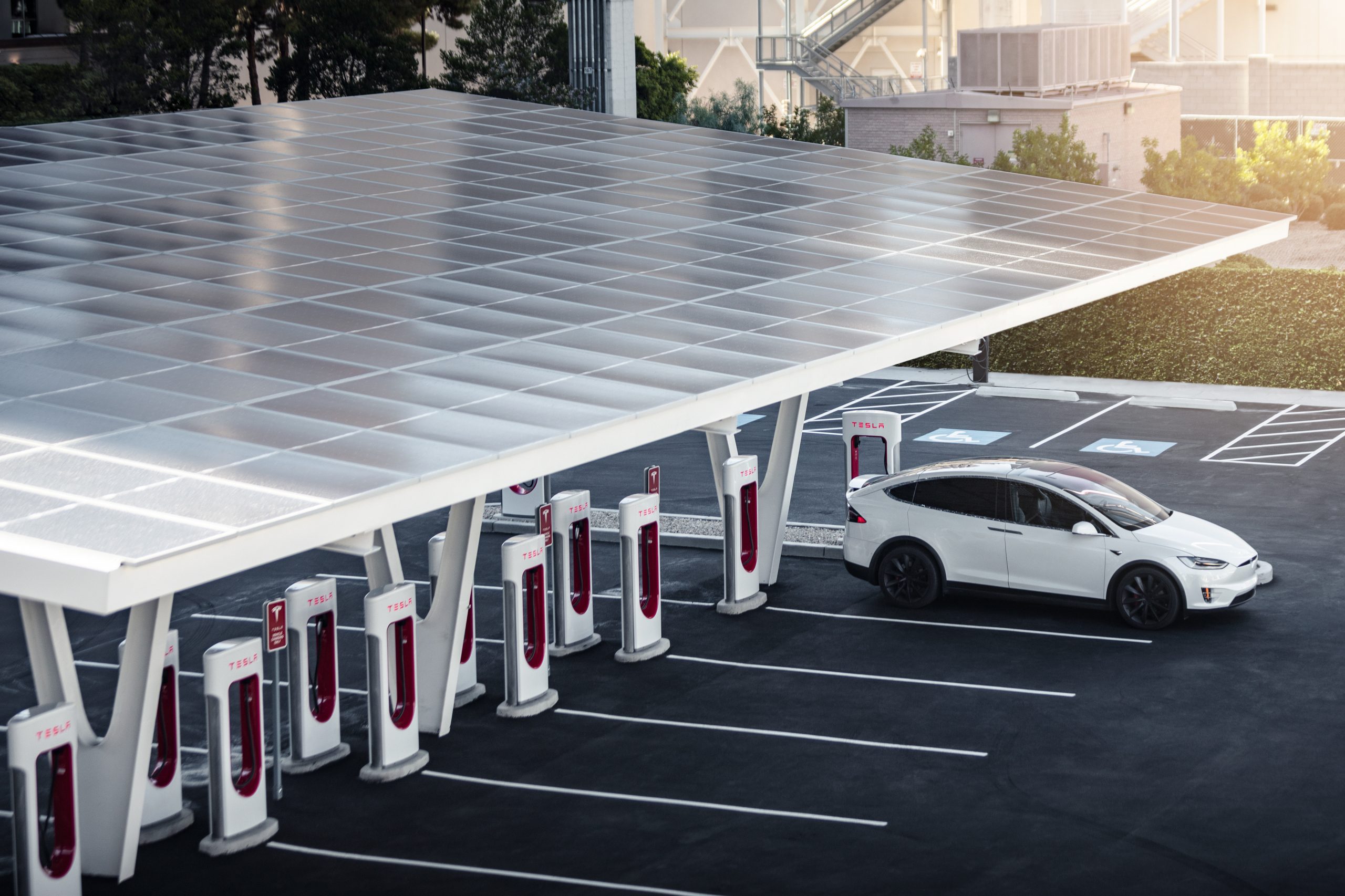

Investor's Corner
Tesla can apply for Bipartisan bill funding after opening Superchargers to other OEMs
Tesla can apply for a portion of the $7.5 billion funding that is set aside for electric vehicle chargers in the recently finalized Bipartisan Infrastructure Bill after it opens its Supercharger network to other manufacturers.
Bipartisan Infrastructure Bill
For a few weeks, Teslarati has been following the progress of the Bipartisan Infrastructure Bill due to its inclusion of the possible funding of certain electric vehicle programs. After revealing that $7.5 billion of the $1 trillion bill would be set aside for expanding the electric vehicle charging network, the details of who or what would be eligible remained unclear. However, upon the finalizing of the bill, yesterday and its imminent send-over to Senate members later this week, the language of the bill is now revealed, and it may be one of the reasons Tesla CEO Elon Musk has been pondering the possibility of opening the EV charging network to other vehicles, as he announced last week.
Credit: Tesla
Tesla will begin opening its expansive Supercharger network in the United States before the end of the year. Aiming to increase the number of available EV charging options to third-party companies, Tesla owners will have a distinct advantage in charging at the company-owned chargers, while other car owners will have limitations in terms of time and output. However, the opening of the Supercharger network allows owners of EVs that are not produced by Tesla access to a more broad network of charging options, which could make EVs a more appealing option for those who worry about charge points.
How the $7.5 billion pie will be cut
According to the Bill published by the Senate earlier today, several terms need to be met to qualify for the funding. These include:
(1) Standards – Electric vehicle charging infrastructure installed using funds provided under this title shall provide, at a minimum–
“(A) non-proprietary charging connectors that meet applicable industry safety standards; and “(B) open access to payment methods that are available to all members of the public to ensure secure, convenient equal access to the electric vehicle charging infrastructure that shall not be limited by membership to a particular payment provider.”
On page 2,646 of the bill, the language states:
Provided further, That funds made available under this paragraph in this Act may be used to contract with a private entity for acquisition and installation of publicly accessible electric vehicle charging infrastructure and the private entity may pay the non-Federal share of the cost of a project funded under this paragraph: Provided further, That funds made available under this paragraph in this Act shall be for projects directly related to the charging of a vehicle and only for electric vehicle charging infrastructure that is open to the general public or to authorized commercial motor vehicle operators from more than one company.
Essentially, any private entity that has an open charging infrastructure that is operable by more than one automaker can apply for some of the $7.5 billion funding.
Tesla opening the Supercharger network to other manufacturers
In late July, CEO Elon Musk said that Tesla would make its Supercharger network open to other EVs later in 2021. This will occur in more than one market, as Norway and Sweden are also set to benefit from the open availability starting 2022.
The full Bipartisan Infrastructure Bill is available below. I suggest using the “Find in Page” feature, as it is 2,702 pages long.
Bipartisan Infrastructure Bill by Joey Klender on Scribd
Don’t hesitate to contact us with tips! Email us at tips@teslarati.com, or you can email me directly at joey@teslarati.com.

Investor's Corner
Tesla stock closes at all-time high on heels of Robotaxi progress

Tesla stock (NASDAQ: TSLA) closed at an all-time high on Tuesday, jumping over 3 percent during the day and finishing at $489.88.
The price beats the previous record close, which was $479.86.
Shares have had a crazy year, dipping more than 40 percent from the start of the year. The stock then started to recover once again around late April, when its price started to climb back up from the low $200 level.
This week, Tesla started to climb toward its highest levels ever, as it was revealed on Sunday that the company was testing driverless Robotaxis in Austin. The spike in value pushed the company’s valuation to $1.63 trillion.
Tesla Robotaxi goes driverless as Musk confirms Safety Monitor removal testing
It is the seventh-most valuable company on the market currently, trailing Nvidia, Apple, Alphabet (Google), Microsoft, Amazon, and Meta.
Shares closed up $14.57 today, up over 3 percent.
The stock has gone through a lot this year, as previously mentioned. Shares tumbled in Q1 due to CEO Elon Musk’s involvement with the Department of Government Efficiency (DOGE), which pulled his attention away from his companies and left a major overhang on their valuations.
However, things started to rebound halfway through the year, and as the government started to phase out the $7,500 tax credit, demand spiked as consumers tried to take advantage of it.
Q3 deliveries were the highest in company history, and Tesla responded to the loss of the tax credit with the launch of the Model 3 and Model Y Standard.
Additionally, analysts have announced high expectations this week for the company on Wall Street as Robotaxi continues to be the focus. With autonomy within Tesla’s sights, things are moving in the direction of Robotaxi being a major catalyst for growth on the Street in the coming year.
Elon Musk
Tesla needs to come through on this one Robotaxi metric, analyst says
“We think the key focus from here will be how fast Tesla can scale driverless operations (including if Tesla’s approach to software/hardware allows it to scale significantly faster than competitors, as the company has argued), and on profitability.”

Tesla needs to come through on this one Robotaxi metric, Mark Delaney of Goldman Sachs says.
Tesla is in the process of rolling out its Robotaxi platform to areas outside of Austin and the California Bay Area. It has plans to launch in five additional cities, including Houston, Dallas, Miami, Las Vegas, and Phoenix.
However, the company’s expansion is not what the focus needs to be, according to Delaney. It’s the speed of deployment.
The analyst said:
“We think the key focus from here will be how fast Tesla can scale driverless operations (including if Tesla’s approach to software/hardware allows it to scale significantly faster than competitors, as the company has argued), and on profitability.”
Profitability will come as the Robotaxi fleet expands. Making that money will be dependent on when Tesla can initiate rides in more areas, giving more customers access to the program.
There are some additional things that the company needs to make happen ahead of the major Robotaxi expansion, one of those things is launching driverless rides in Austin, the first city in which it launched the program.
This week, Tesla started testing driverless Robotaxi rides in Austin, as two different Model Y units were spotted with no occupants, a huge step in the company’s plans for the ride-sharing platform.
Tesla Robotaxi goes driverless as Musk confirms Safety Monitor removal testing
CEO Elon Musk has been hoping to remove Safety Monitors from Robotaxis in Austin for several months, first mentioning the plan to have them out by the end of 2025 in September. He confirmed on Sunday that Tesla had officially removed vehicle occupants and started testing truly unsupervised rides.
Although Safety Monitors in Austin have been sitting in the passenger’s seat, they have still had the ability to override things in case of an emergency. After all, the ultimate goal was safety and avoiding any accidents or injuries.
Goldman Sachs reiterated its ‘Neutral’ rating and its $400 price target. Delaney said, “Tesla is making progress with its autonomous technology,” and recent developments make it evident that this is true.
Investor's Corner
Tesla gets bold Robotaxi prediction from Wall Street firm
Last week, Andrew Percoco took over Tesla analysis for Morgan Stanley from Adam Jonas, who covered the stock for years. Percoco seems to be less optimistic and bullish on Tesla shares, while still being fair and balanced in his analysis.

Tesla (NASDAQ: TSLA) received a bold Robotaxi prediction from Morgan Stanley, which anticipates a dramatic increase in the size of the company’s autonomous ride-hailing suite in the coming years.
Last week, Andrew Percoco took over Tesla analysis for Morgan Stanley from Adam Jonas, who covered the stock for years. Percoco seems to be less optimistic and bullish on Tesla shares, while still being fair and balanced in his analysis.
Percoco dug into the Robotaxi fleet and its expansion in the coming years in his latest note, released on Tuesday. The firm expects Tesla to increase the Robotaxi fleet size to 1,000 vehicles in 2026. However, that’s small-scale compared to what they expect from Tesla in a decade.
Tesla expands Robotaxi app access once again, this time on a global scale
By 2035, Morgan Stanley believes there will be one million Robotaxis on the road across multiple cities, a major jump and a considerable fleet size. We assume this means the fleet of vehicles Tesla will operate internally, and not including passenger-owned vehicles that could be added through software updates.
He also listed three specific catalysts that investors should pay attention to, as these will represent the company being on track to achieve its Robotaxi dreams:
- Opening Robotaxi to the public without a Safety Monitor. Timing is unclear, but it appears that Tesla is getting closer by the day.
- Improvement in safety metrics without the Safety Monitor. Tesla’s ability to improve its safety metrics as it scales miles driven without the Safety Monitor is imperative as it looks to scale in new states and cities in 2026.
- Cybercab start of production, targeted for April 2026. Tesla’s Cybercab is a purpose-built vehicle (no steering wheel or pedals, only two seats) that is expected to be produced through its state-of-the-art unboxed manufacturing process, offering further cost reductions and thus accelerating adoption over time.
Robotaxi stands to be one of Tesla’s most significant revenue contributors, especially as the company plans to continue expanding its ride-hailing service across the world in the coming years.
Its current deployment strategy is controlled and conservative to avoid any drastic and potentially program-ruining incidents.
So far, the program, which is active in Austin and the California Bay Area, has been widely successful.








